August 1, 2017 — 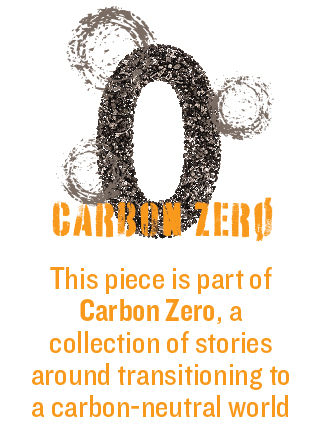 Seventy-seven-year-old Heinz Spahn — whose blue eyes are both twinkling and stern — vividly recalls his younger days. The Zollverein coal mine, where he worked in the area of Essen, Germany, was so clogged with coal dust, he remembers, that people would stir up a black cloud whenever they moved. “It was no pony farm,” he says — using the sardonic German phrase to describe the harsh conditions: The roar of machines was at a constant 110 decibels, and the men were nicknamed waschbar, or “raccoons,” for the black smudges that permanently adorned their faces.
Seventy-seven-year-old Heinz Spahn — whose blue eyes are both twinkling and stern — vividly recalls his younger days. The Zollverein coal mine, where he worked in the area of Essen, Germany, was so clogged with coal dust, he remembers, that people would stir up a black cloud whenever they moved. “It was no pony farm,” he says — using the sardonic German phrase to describe the harsh conditions: The roar of machines was at a constant 110 decibels, and the men were nicknamed waschbar, or “raccoons,” for the black smudges that permanently adorned their faces.
Today, the scene at Zollverein is very different. Inside the coal washery where Spahn once worked — the largest building in the Zollverein mining complex — the air is clean, and its up to 8,000 miners have been replaced by one-and-a-half million tourists annually. The whole complex is now a UNESCO world heritage site: Spahn, who worked here as a fusion welder until the mine shut down on December 23, 1986, is employed as a guide to teach tourists about its history. “I know this building in and out. I know every screw,” he says fondly.
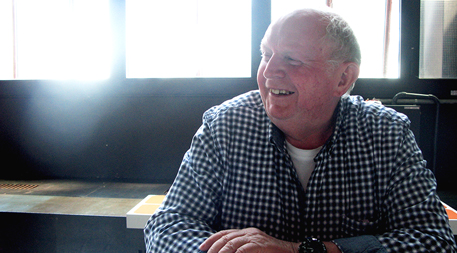
Former Zollverein coal mine worker Heinz Spahn now leads tours of the facility, which has been designated a UNESCO world heritage site. Photo courtesy of Emma Bryce
Zollverein is a symbol of Germany’s transition away from fossil fuels toward renewable energy — a program called the Energiewende that aims to have 80 percent of the country’s energy generated from renewables by 2050. That program has transformed Germany into a global poster child for green energy. But what does the transition mean for residents of Essen and the rest of the Ruhr region — the former industrial coal belt — whose lives and livelihoods have been dramatically altered by the reduced demand for coal? The answer to that could hold some useful lessons for those undergoing similar transitions elsewhere.
Just Transition
Spanning roughly 1,700 square miles (2,700 kilometers), the Ruhr Valley lies in the state of North-Rhine Westphalia, made up of 53 cities that came to depend on coal mining when it reached an industrial scale in the 1800s. At their height in the 1950s, the mines employed about 600,000 workers, entwining the region’s identity with coal.
“Coal runs through my whole life,” says Spahn, whose grandfather, father and two sons were miners, too. But in the 1970s, as cheaper coal imports from other countries began to outcompete German production and drive down the price of domestic coal, it became unsustainable for the government to keep subsidizing the mines. At the same time, an appetite for green energy began in the 1970s, driven forward by a wave of anti-nuclear sentiment in Germany that gathered force after the Chernobyl nuclear disaster in 1986. And so, the phaseout of coal began.
Today, only two hard coal mines remain, and in 2018 they’ll both be shut down. Germany continues to import hard coal from other countries for a substantial portion of its energy production — another habit it’s trying to kick, in line with its 2050 renewable energy target. The country also still extracts soft brown coal called lignite from hundreds of open-pit mines across the country. However, with the federal elections coming up in September, the phaseout of lignite is on the political agenda. Such a move would cost another several thousand jobs in the Ruhr alone — forcing the government to consider how to achieve a fair and final phaseout, and the role of renewable energy in that.
The move away from hard coal has left a lingering legacy in some cities, where unemployment can exceed 10 percent. Still, overall it “was really a soft and just transition,” says Stefanie Groll, head of Environmental Policy and Sustainability at the Heinrich Boll Foundation in Berlin. “In the Ruhr area, union representatives and local politicians worked out a plan to compensate and requalify people who worked in the coal industry,” she says. For families like Spahn’s, it was a success: under pressure from the labor unions, the mines where his sons worked launched a proactive campaign in 1994 to train employees for different careers. “My one son is now a professional security guard and the other is a landscaper,” he says.
Cultural Rebranding
At Zollverein, the viewing platform offers a 360-degree view of the physical change the transformation has brought about. The Ruhr’s low-built cities intermingle with lush forests and parks. Amid smokestacks stand the spires of wind turbines. Zollverein’s 55-meter- (180-foot-) high winding tower, perched above the underground mine shaft, itself makes a striking contribution to the landscape: Since the mine’s revival it has been dubbed “the Eiffel Tower of the Ruhr,” highlighting an important trend: the cultural rebranding of the Ruhr’s industrial history.
People 30 years ago would have scoffed at the thought of holidaying here, says Frank Switala, a local tour guide who works at Zollverein. “Now the number of hotels has increased,” he says. “There are new museums. We have five philharmonic orchestras in the Ruhr area, and so many theaters.”
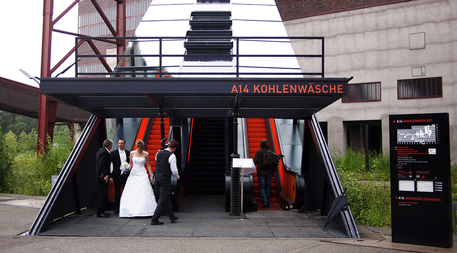
Once a factory for sorting coal, Kohlenwäsche is now home to a museum that hosts festive events. Photo courtesy of Zeitfixierer
The mines themselves have even become a cultural stage. A museum and gallery at Zollverein attracts over 250,000 visitors a year, and several other mines host music concerts, food and cultural festivals. In the nearby city of Bochum, an old industrial plant — now the site of the German Mining Museum — is surrounded with stately homes flanked by lush gardens. The change hasn’t gone unnoticed; the Ruhr was officially named Europe’s cultural capital in 2010.
The Ruhr also has become attractive for businesses to invest, say Switala. Zollverein, like many former mines, is now also home to several businesses. Artists, jewelry designers, choreographers, design firms and tourism companies are just a sampling of those who have made the trendy industrial space their home.
Extricated From Pollution
In 1961, German politician Willy Brandt called for making the skies over the Ruhr blue again. It was a prospect that people in the Ruhr found unbelievable at the time, so accustomed were they to the gray-tinted, coal-polluted air. But Brandt’s demand has since been realized: The skies over the Ruhr are now clear.
Indeed, Switala credits the transition away from coal with extricating the region from a long legacy of pollution. “Every evening my grandmother tested the wind, and then decided whether or not to leave the washing out,” Switala recalls: If it was blowing in a particular direction, it would carry pollution from the mine sites, and her clothes would be black in the morning. Knowing the health risks, his grandfather, who had worked on the mines all his life, adamantly kept his five children out, Switala says. “That was quite common in that generation: you wanted your kids to have a better life than you did.”
Roland Sauskat shares a similar family story. He’s a social worker with a local soccer club called Rot-Weiss Essen, helping to combat drug abuse and crime in young soccer fans. In the Ruhr’s soccer-mad culture, even the clubs themselves have ties to mining: Historically coal miners were recruited as players, and stadiums were frequently built adjacent to the mines. Today, this industrial culture is celebrated as part of players’ and fans’ identities, Sauskat explains.
In the neighborhood of Gelsenkirchen-Horst where he grew up, he walks around the grounds of Nordstern, the former mine — now museum, events space and business park — where his father and grandfather spent their working lives. His grandfather started mining when he was just 14, at a time when they still used horses underground to haul coal. He died of the schwartze lunge — black lung — a disease triggered by the accumulation of small rock particles inhaled during mining, which ultimately causes tissue death in the lung. Sauskat’s father in turn died of lung cancer. Despite this, Sauskat doesn’t recall his family expressing any bitterness about the work: “It was a job,” he says bluntly. Ironically, Sauskat himself was spared this fate due to childhood asthma which made him unfit for the mines, a problem he says was common among the region’s youth.
Six miles south, near Essen — one of the region’s largest and most prosperous cities, whose centre was home to a cluster of mines — Sauskat points out signs of environmental change that the transition has ushered in. In the district of Altendorf, a former coal and steel production site is now a lake, where people today walk their dogs and have picnics, he says. It’s part of the wider Emscher Park initiative, a multi-billion-euro project to restore, create and connect green spaces along a 300-square-mile (nearly 800-square-kilometer) span of the Ruhr that was once devastated by mining.
Still, the legacies of coal haven’t disappeared completely. “The Earth beneath this region is like Swiss cheese,” Switala says. Riddled with tunnels from centuries of mining, the geography has become so brittle that the region regularly battles with sinkholes. Groundwater flooding the old tunnels now has to be laboriously pumped out.
Move Toward Renewables
In Gelsenkirchen, locals experience some of the highest unemployment rates, hovering around 15 percent. The city’s quiet streets betray signs of economic struggle, with many businesses boarded up. But since the 1990s, it has been trying to revisit its former industrial prosperity with the Science Park, a hub for regional business, which lies on the site of a former coal-powered steel plant. The building’s glass facade looks over a manmade lake flanked by rolling lawns, and its roof is outfitted with 900 solar panels that generate roughly one-third of the building’s electricity.
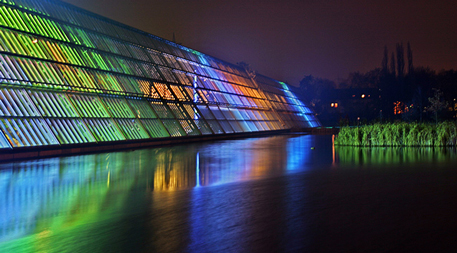
Gelsenkirchen’s Science Park, built on the site of a former coal-powered steel plant, is home to 51 businesses and 900 solar panels. Photo courtesy of GFDL
“Gelsenkirchen was called the city of a thousand fires. It became the city of a thousand suns,” — a nod to the solar roof, and green energy technologies being developed at the park, says Hildegard Boisserée-Frühbuss, project manager at the park’s EnergyLab, a experimental laboratory that educates local students about renewable energies. The building now houses 51 businesses — mostly focused on science, technology and renewable energy development. Boisserée-Frühbuss spends her time working with local colleges and schools to give the youth exposure to these fields, in the hopes that they’ll be inspired to find employment there. “Once it was a steel foundry. Now the Science Park is a thinking factory,” she says.
With the move toward renewables, how much the Ruhr will benefit — having sacrificed so much toward this clean energy goal — has become a primary focus. Some 330,000 people work in the renewable sector in Germany; 45,000 of those are in North-Rhine Westphalia — and that will grow, predicts Jan Dobertin from the National Association of Renewable Energies in North-Rhine Westphalia, known as LEE NRW. “The Ruhr region is now one of the biggest providers of green economy products and services, such as efficiency technologies, recycling or renewable energy,” Dobertin says. LEE NRW works with regional energy companies to build better political frameworks for integrating renewables in the Ruhr. “Our argument is that the renewable energy sector is much more employee intensive than [fossil fuels],” he says. A recent poll of Ruhr residents carried out by LEE NRW suggests that they have the public on their side: 64 percent of those polled want renewables to be a priority for the state government of North-Rhine Westphalia.

Innovators are proposing to transform the Prosper-Haniel coal mine into a hydroelectric storage facility after it closes in 2018. Photo courtesy of Frank Vincentz
In keeping with this trend, just outside the small city of Bottrop a plant called Prosper-Haniel — one of the two last hard coal mines in Germany — has become the frontline of a renewables experiment. Ahead of its closure in 2018, a consortium of local universities, consultants and mining operators are exploring the chance to turn the plant’s deep mine shaft into a hydroelectric storage facility. The plan is at a preliminary, exploratory stage, cautions André Niemann from the University of Essen-Duisburg, who is coordinating the research team. But if it works, it could store and provide power for over 400,000 local homes. He’s motivated by the chance to revive the industrial landscape he grew up in. “The question will be, what did we do to give the region back to the people?” he says.
Correcting Wrongs
What the project can’t change is the fate of the 2,600 employees at Prosper-Haniel who will lose their jobs next year: if the hydroelectric project goes through it won’t be a major employer, Niemann says. These concerns extend to lignite mining, whose much-debated end-point — ranging from 2030 to 2050 — would officially bring the era of German coal production to a close.
“There’s no officially approved ‘just transition plan’ for the three remaining lignite regions in Germany,” cautions Groll.
Some see the shutdown of lignite mining as an opportunity to correct some of the wrongs that were committed during the transition from hard coal. While aspects of the decades-long hard coal phaseout have been well managed, according to Dobertin, in the past the “political hesitation” to rapidly roll out a structured recovery plan for the Ruhr has today contributed to a legacy of unemployment in some cities, and urban areas that are still saddled with poor, outdated infrastructure.
“We don’t want to repeat its mistakes,” Dobertin says. “Instead we need a well structured fade-out plan for lignite with clear economic and social measures.” He’s adamant about the potential of renewables to improve the Ruhr’s fate — though he understands that this threatens its identity, especially for its older generation. And he does ponder how his grandfather — the last miner in his family — would have felt about his anti-coal stance. “I think ultimately my grandfather would have been happy about it, because we have to do something about climate change, and renewables are one big solution for this challenge.”
Reflecting on this future, Heinz Spahn — sitting just meters away from the machine where he toiled for 26 years — shares his own views. “Eventually the [coal] legacy will die out, and that makes me sad. But I have made my peace with it,” he says. “I am very happy that the Ruhr region has become so green and healthy. I am glad the youth today will have a better childhood than I did.” ![]()
Editor’s note: Editorially independent reporting for this story was commissioned by the Stanley Foundation and published in Courier with the headline: “Life Beyond Coal.”
Ensia shares solutions-focused stories free of charge through our online magazine and partner media. That means audiences around the world have ready access to stories that can — and do — help them shape a better future. If you value our work, please show your support today.
Yes, I'll support Ensia!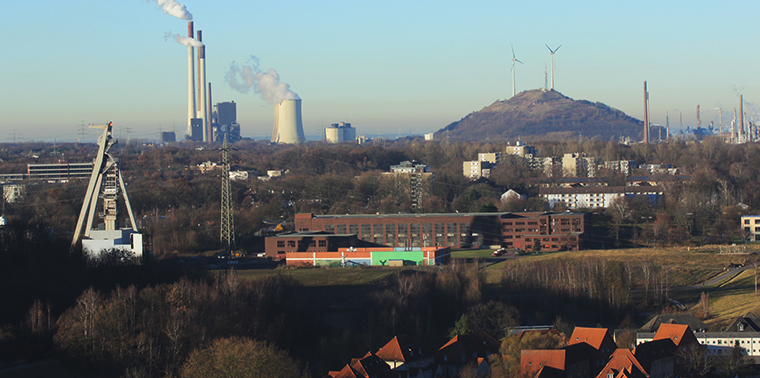
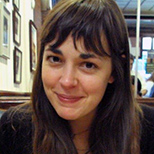
Worse, the switch to solar and wind continues to be very expensive and the government has had to use taxpayer money to bail out the utilities (which have to stay operational although they are idle much of the time) and Germans are paying $22b a year in higher electric bills.